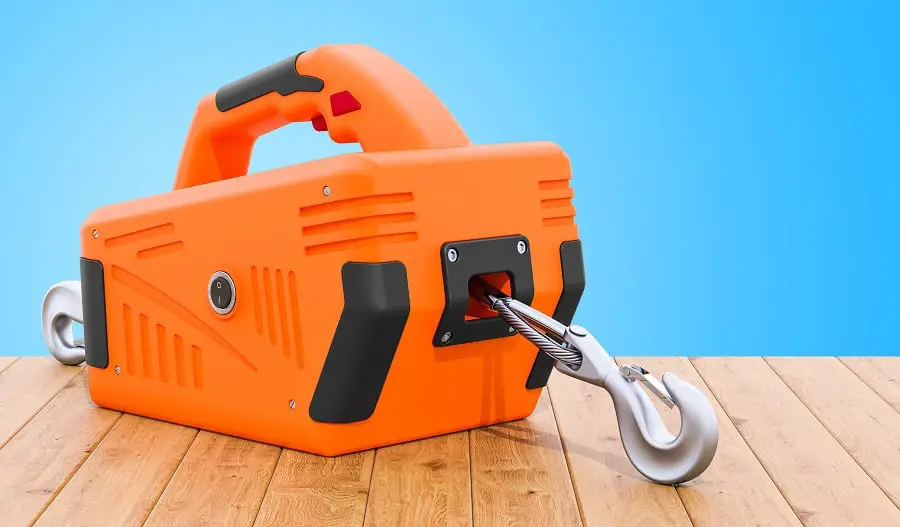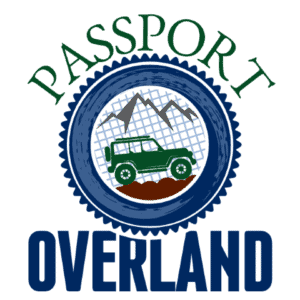
Did you know that a portable winch can be a life-saving device, not just for Overlanding and offroading but also for every day? A portable winch is a powered hydraulically driven device capable of pulling objects or vehicles by means of an attached cable. It can be used as a low-cost alternative to more expensive heavy lifting equipment.
They’re commonly used on trucks for loading and unloading, as well as an emergency recovery measure for getting unstuck from mud or snow. In some instances, they’re also used as a way to tow vehicles out of places they shouldn’t be, like steep slopes, ravines, or rivers. Here are some tips on how to choose the best portable winch for your Overlanding needs.
What Is A Portable Winch?
A portable winch is a “device to move Overlanding gear, from pickup or trailer to a destination.” A trailer winch is the heaviest type of winch. It can be between 300 and 400 pounds and has a large metal and plastic box or cylinder that provides the winch handle. A backup winch is also a portable winch with a smaller cylinder and smaller motor.
Why Should I Use A Portable Winch?
Portable winches are great for many reasons. They’re cost-effective for their value, lightweight and easy to transport, provide peace of mind for the team involved in any recovery mission, and provide versatility for the users.
What Are My Options For A Portable Winch?
There are many different portable winches on the market with different sizes, power, and cost ranges. However, all portable winches will feature the same basic form factor and some specifications.
When choosing a portable winch, it’s important to consider the following factors:
- Cost
- Volume
- Type
- Power
- Cable length
- Cable capacity
- Flexibility
What Type Of Winch Should I Get?
There are three main types of portable winches: hydraulic, non-hydraulic, and air-powered. Each type of winch can pull a different weight, but the majority of them are also able to also tow vehicles. Hydraulic winches are the most popular and well-known type and are typically the most affordable. They’re also the most versatile winch type.
How Are Portable Winches Different From Regular Winches?
Conventional winches are mounted on land-based vehicles. They are mounted on land-based vehicles. Portable winches are mounted to vehicles on the go. They usually use special transmissions and quick-release gearboxes to convert power from the car’s battery to the winch.
They are mounted to vehicles on the go. They usually use special transmissions and quick-release gearboxes to convert power from the car’s battery to the winch. Some models are even equipped with a winch rope which allows the user to attach and detach the winch cable without having to attach the entire car to the winch.
What Do You Need To Consider?
There are three primary types of portable winches and their capabilities: single, powered winches and dual-powdered or sealed-air portable winches. Dual-powdered or sealed-air winches produce less noise than single-powdered or single-air powered units, and they come with a lower profile design which is easier to transport. One thing to keep in mind is that all the following considerations need to be taken into consideration. Each unit is different, so you need to shop for the best features to get the best performance from them.
Speed
Different types of winches are designed for different tasks. If speed is important, a single-powdered or single-air power source is the way to go.
Capacity (Pulling Power)
Some portable winches come in all different sizes and capacities. For an overland vehicle owner, a gear capacity may be a good starting point, as it represents the weight of the unit when fully loaded. It’s a good indicator of what types of loads the unit can be used for. The range of various winch capacities is widely varied depending on the manufacturer of the unit and the materials used to build it.
A typical capacity range for a tow rope made of high-strength cable is from 500 to 2,500 lb.-lbs. (402-908 kg). A self-powered winch from a major manufacturer might only weigh as little as 15 lbs. (6.8 kg). Regardless, it’s safe to assume that you should look at the capacity of your chosen winch at the time of purchase.
Wire Rope Size
It should be long enough for the vehicle to pull the vehicle with the cable to the exact spot it’s towing. The tow cable should not be longer than the length of the vehicle itself. However, it doesn’t have to be a specific size, and if you have a universal winch, you can change the size of your tow cable as you need. A multi-wheeled portable winch does not allow much “overt steering”, so you need to be careful with the winch and not to guide the tow vehicle off the road.
You should never try to tow anything over eight feet, or it could damage the front end of your vehicle. It’s also good to make sure that the tow vehicle itself is designed to handle any load. It should be sturdy and strong enough to handle any kind of stress or strain.
Different Types of Portable Winches
There are many types of top portable winches in the market to choose from when building your own. If you have a surplus of money and time on your hands, you can build one to match the one you have. However, if you have limited funds or don’t want to buy the expensive options, you’ll have to buy the less expensive ones or pay for a service to install one on your existing winch. Here are some tips on how to choose the best electric portable winch for your Overlanding needs.
There are several types of portable winches you can choose from. They include;
Self-Propelled Winches
This type of winch is driven by a track-type pulley, which has no wheels. It doesn’t require a rigid frame or suspension system, making it easy to store. It has an input and output cable, with the input running up the pulley to the winch and the output running through the pulley to the hitch or vehicle.
Electric Winches
They’re the most common type of portable winch, so they’re likely to be familiar to most of the readers of these articles. Many of them come with replaceable batteries, which allow the user to set the winch to pull or operate with a fully charged battery if that’s what is needed. Another advantage is that these are relatively easy to transport.
They’re also more affordable than most heavy-duty winches, which can run into thousands of dollars. A solar electric winch operates on solar power, so you don’t need to worry about carrying fuel with you. They come with either a plug or a USB connection which you can charge with a standard household plug.
Air Winches
Older air-driven winches were sometimes called “air tools,” and some even used compressed air as the working fluid. Modern hydraulic-powered winches usually don’t use compressed air. And while they may be heavier than air-driven winches, they’re less complex, require less maintenance, and they’re portable since they usually attach to a vehicle’s winch mount.
And when paired with a 2-phase coupling motor, they can run continuously for an extended period of time. Of course, you can also rely on your imagination and ingenuity to work your winch. Low-profile winches are a miniaturized version of larger models, with a powerful motor that puts out a moderate amount of torque.
Manual Winches
Many people start by considering the manual winches for use in the backcountry. These portable winches are generally available at outdoor supply shops and classifieds and are relatively inexpensive.
A reliable manual winch will normally have a capacity that can hold up to 2,000 pounds. These were originally developed for small logjams or boulders on forest roads. They can also be used for moving logs off steep slopes and down into waiting trucks. Some models will also have a guide handle that can be attached to a skid, making for an excellent tool for a novice offroader.
Be aware that the manual winch isn’t an all-purpose winch, as it can be a bit clunky to operate. You will also have to mount it on a wheeled vehicle.
Final Thoughts
No matter what type of Overlanding vehicle you have, it is a good idea to have a reliable portable winch. Because not all underpowered units are safe, and having one will make you a much safer driver. They’re also used as an emergency rescue measure for getting unstuck from mud or snow in some instances.
You can always attach a few of these to your truck or SUV’s fender or tailgate and move around on the trail, where a regular winch wouldn’t work. It’s safe to say, though, that this type of equipment doesn’t come cheap, but it’s a worthwhile investment for any overlander who plans on spending a lot of time off the beaten track.
Do you know any good portable winch brands? How about the best winches for Overlanding vehicles? Share your thoughts and opinions in the comment section below.

